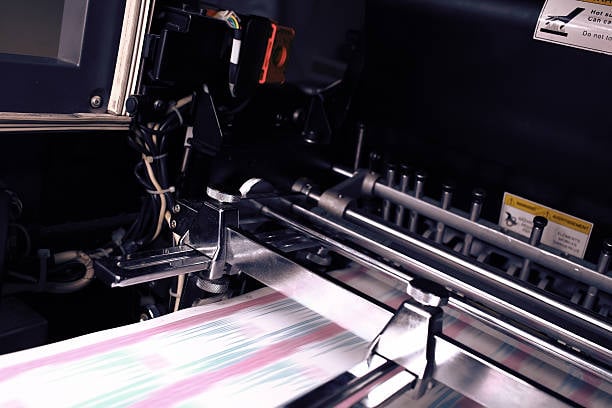Most marketers have had experience printing catalogs and other promotional items using offset printing technology. Many of them, though, would be unsure about the printing technique utilized. It's a shame because each technique has distinct advantages for the market and the organization. It is worthwhile to brag about new savings, shorter lead times, or the use of novel refinements - the selection of an appropriate technique will help you to achieve these goals with future printing projects.
Let us begin with a brief overview of the many types of printing presses utilized by professional printers for the majority of print today. Fully comprehend the world of offset, allowing you to more deliberately guide your print work to an appropriate print supplier with web offset presses or sheet-fed specialty. You have Digital, Sheet-Fed, and Web-Offset options. We'll look at each one separately to give you a better grasp of what and how they generate.
The Advantages of Offset Printing
Offset printing gives the greatest color reproduction. Using this technology, works of the greatest quality are printed - unique publications, catalogs, CDs, and other promotional materials, whose quality is to represent the company's image. However, it is vital to mind minimum input. Offset printing shows completely useful with a quantity of at least 1,000 sheets of one pattern. Offset also enables the capability to print on other bases besides paper. It permits handling hues in the printing process and employing additional Pantone colors, such as gold or silver. In this approach there is also no difficulty to make one or two-color prints, retaining the maximum quality of a printed product.
Digital Printing Press
Digital printing is a quick and inexpensive technique to produce high-quality products. It is great for smaller print runs and things with diversity, such as personalization in what is printed. Advertising mailers with individual names and addresses are examples of digital printing initiatives.
Toners, inkjet heads, and lasers are used in the digital printing process. Toners are fused to the paper, inkjet heads employ ink droplets sprinkled on the paper, while lasers use an electrostatic plate. Because of advancements in digital printing technology, quality is constantly improving and is now comparable to sheet-fed and web offset outcomes.
Digital printing is ideal for goods that require a quick turnaround, as it can be completed in as little as 24 hours. Because digital technology is used, there is no need for extensive plate setup.
Sheet Fed Printing Press
Sheet feed printing is ideal for heavier paper and allows for the application of extra spot colors and varnishes, making it ideal for printing covers. Despite its name, sheet-fed printing may employ both paper reels and sheets and is well suited to high-volume printing such as leaflets and brochures on paper weights greater than 115gsm. In comparison, there is often less waste generated than if the web offset printing process was used. Because the ink is not a headset on the paper, it oxidizes and binds into the paper, producing a more matt texture than heatset web offset. Furthermore, because each step of the process is separate in sheet-fed printing, printer faults do not impede cutting or binding, as they can in web offset printing.
LEARN MORE DETAILS: How Do Sheet-Fed Presses Operate?
Web Offset Printing Press
Web offset printing is a quick and cost-effective printing method for high-volume or high-pagination print items. This procedure is typically used to print periodicals, direct mail catalogs, and holiday brochures on lighter-weight paper material. Because both printing and folding occur in-line, it is ideal for larger print runs or greater paginations. Web offset presses can be set up to print press-ready publications or catalogs.
Because the ink is not absorbed into the paper, heatset web offset employs an oven to dry the ink on the paper as it is printed, resulting in a glossy finish. After the paper has been cut to size, the heat can cause it to flute or ripple somewhat, and web growth can ensue. Web growth takes place over time as moisture is reabsorbed by the heatset printed paper. As a result, the paper may expand slightly more than a sheetfed printed cover.
The ink in coldset web offset is fixed as it absorbs into the uncoated newspaper paper. Coldset web offset is commonly used in newspapers.
LEARN MORE DETAILS: How Does Web Printing Work?
Sheet-fed VS. Web Press Printing
-
Similarities
Sheet-fed and web press printing are both suitable industrial methods for producing promotional materials. These methods are suitable for orders of 1,000 or more tri-fold brochures, order cards, lithographed envelopes, and even bi-colored letterheads.
-
Differences
- The Mechanics of Each
Sheet-fed printing, as the name implies, requires feeding single, individual pages into a press. Web press printing, on the other hand, uses a single continuous roll of paper.
- Volume & Speed
While sheet-fed presses are the preferred alternative for projects requiring higher quality, web presses are more efficient at handling larger volumes for larger jobs.
The main differences between the two procedures are visible in the finish of the end products (because of printing and drying process variations) and the specific stock of paper handled by each.
HUIDA offset printing plate manufacturer can advise you on which solutions will offer you with the best results, whether you are searching for catalog printing, brochure printing, or a professional magazine printer.

